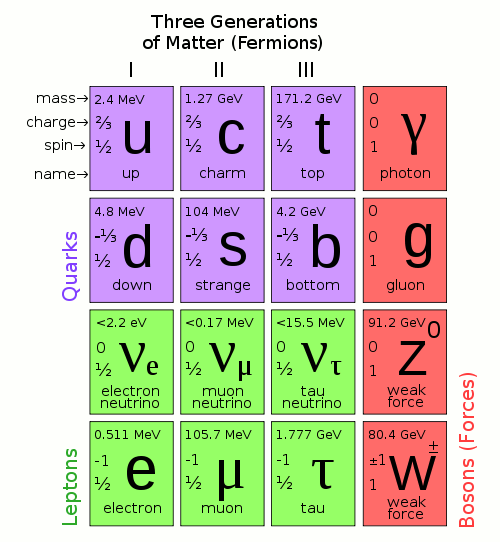| Tikalon Blog is now in archive mode.
An easily printed and saved version of this article, and a link
to a directory of all articles, can be found below: |
|
This article |
| Directory of all articles |
Morphing Neutrinos
June 2, 2010
Hans Bethe is famous for many things, one of which is the precise nature of the nuclear reactions that power our Sun and other stars. In his
C-N-O Cycle, carbon, nitrogen and oxygen isotopes act as catalysts aiding the
fusion of four
protons. Upon fusion, an
alpha particle is produced, along with two
positrons (instantly annihilated by available electrons to produce
gamma rays) and two
electron neutrino. Neutrinos have very little interaction with matter, so they easily escape the star. For such work, Bethe was awarded the 1967
Nobel Prize in Physics.
I mentioned that neutrinos have very little interaction with matter. As a consequence, they are difficult to detect, but there were some experiments launched to measure the solar electron neutrino flux. One of these was by the physical chemist,
Ray Davis. Surprise! The electron neutrino flux was
just a third of what was predicted, and Ray Davis shared the 2002
Nobel Prize in Physics for his work. Since no one could see how Bethe could be wrong, it was suspected that there was something about the electron neutrinos that caused this effect. The assumption was that neutrinos are massless. If a small mass was postulated for the neutrino, then it could oscillate between states in its travel from the Sun to the Earth. The oscillation would be between the three types of neutrinos; the
electron neutrino,
muon neutrinos and
tau neutrinos of the
Standard Model, as listed in the figure. If the experiments detected just the electron neutrino, on average they would see just one third of the predicted flux.

Standard Model image by Dave Fehling.
So, we have a new theory, and that leads to a need for a new experiment; namely, one that records the actual transformation of one type of neutrino into another. Well, that experiment has finally been done [1-2]. This experiment, called
OPERA, is as interesting in its construction as it is in its result. An energetic beam of
muon neutrinos, produced at the
CERN Super Proton Synchrotron in Geneva was aimed at an underground laboratory in Italy, in a mountain called
Gran Sasso, 730 km (453 miles) away. The neutrinos are produced when
protons hit a
graphite target. This generates
pions and
kaons that decay into
muon neutrinos. It takes the muon neutrinos 2.4 milliseconds to travel this distance, enough time for some to change to
tau neutrinos. OPERA was designed to detect these in sheets of photographic film interleaved with lead plates. The OPERA apparatus weighs 1300 tons.
The Opera experiment has been ongoing since 2006, and it's estimated that about 10
18 muon neutrinos have been sent its way. Now it's been reported that OPERA has caught one of these tau neutrinos [1-2]. Of course, a single neutrino is not a completely satisfying result, so the experiment continues. The
Standard Model assumes that neutrinos have no mass, so some corrections need to be made to the model. The Standard Model does not explain
Dark Matter, and its description may involve a requirement for even more neutrino types. Physics, as a profession, appears to be safe in the near term.
I heard Bethe speak at one of his last public lectures. This was at the March 27, 2000, symposium, "Creating Copenhagen," at the
Graduate Center of the City University of New York. The symposium was held in conjunction with performances of
Michael Frayn's play, "
Copenhagen," that depicted a 1941 meeting in Copenhagen between
Niels Bohr and
Werner Heisenberg. It is suspected that the purpose of this meeting was Heisenberg's asking for Bohr's help in the development of a German atomic bomb, but this is not confirmed. Bethe gave a talk entitled, "Why the Germans Did Not Achieve an Atomic Bomb," in which he asserted that there was never really any German bomb program, primarily because Heisenberg mistakenly thought that tons of uranium-235 would be required for a
critical mass. At that same symposium I had the opportunity to meet
John Wheeler, as I reported in a
previous article (John Archibald Wheeler, April 16, 2008).
References:
- Particle Chameleon Caught in the act of Changing, CERN Press Release (May 31, 2010)
- Thomas H. Maugh II, "Physicists unlock mystery of subatomic particle," Los Angeles Times Online (June 1, 2010).
Permanent Link to this article